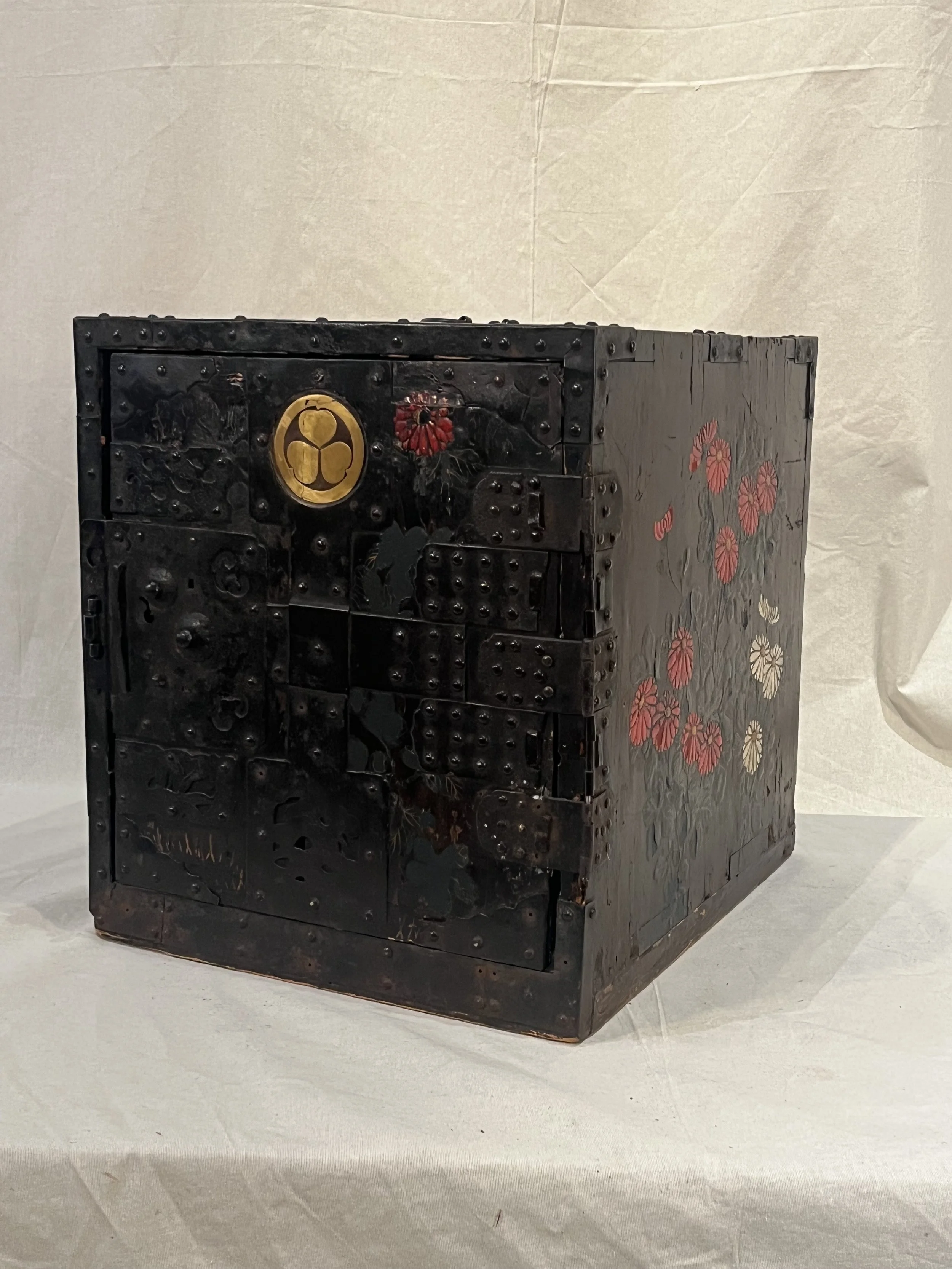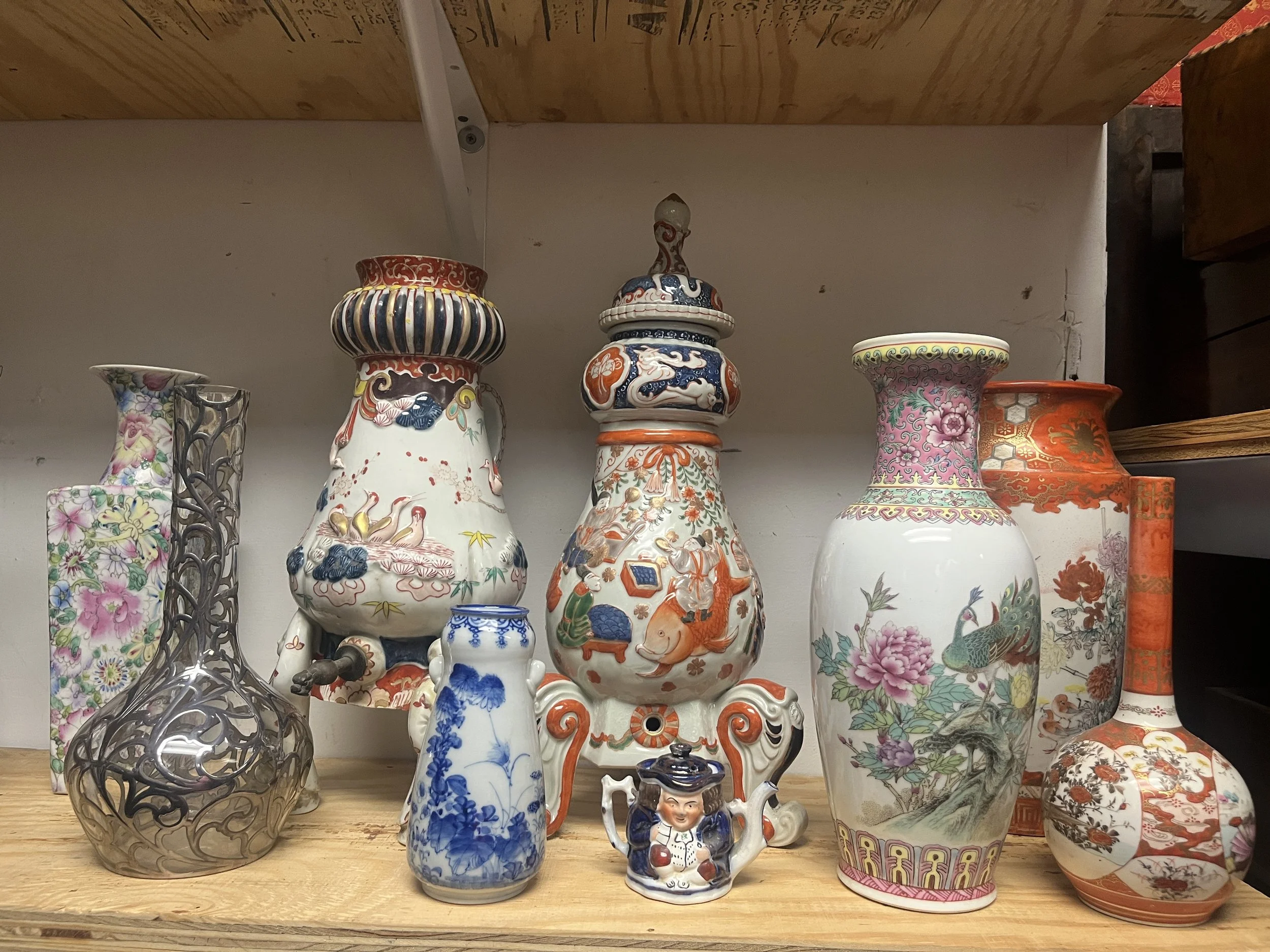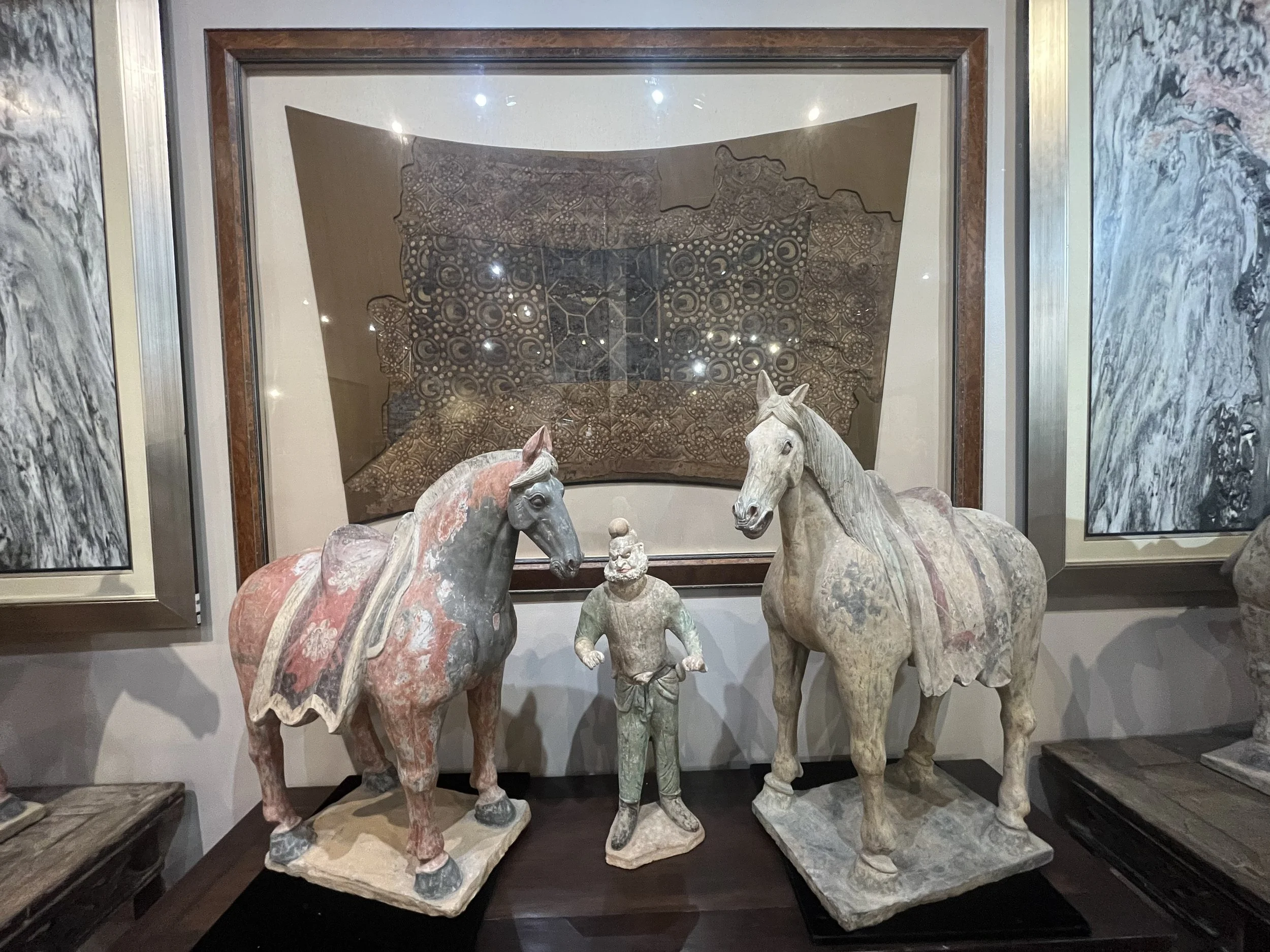TK Asian Antiquities
Discover the Elegance of Ancient Asian and European Worlds.
Dear old friends, new friends, and those who we hope will become friends,
TK Asian Antiquities is adding a "new" feature to its business model. For several years now, many people have gently berated us for not keeping a website that stayed current or even one that was particularly indicative of our skills and strengths. I must admit that the site did not even have a truly representative sampling of the variety of our vast inventory. However many years ago, we did publish a newsletter with some regularity. Unfortunately, as enjoyable as that was for me (and we did have excellent responses), the time and cumbersome nature of printing and mailing caused us to terminate the newsletter. Well, gentle readers, we have decided to update our website with considerably larger representations of our collections. And I have decided to make the changes in a newsletter form!
Rather than inundating everyone with thousands of pieces at one time, we are going to present smaller yet representative selections of artifacts in relatively narrow fields every few weeks. While not being accompanied by in-depth scholarship, we will try to provide enough information in the introductions and and descriptions for the reader to be conversant enough with each subject to be comfortable with decisions relative to that field. For those who wish to go deeper, we will be glad to assist in that pursuit.
Hello again dear friends, collectors, students and those who are simply intrigued by the unique aura of ancient artifacts and artwork.
Those who wish to look closely at the collection offered here will find examples of man’s creativity exhibited in a most delightful way. Our regulars will probably recognize that this selection of ceramics is a bit more esoteric than most of our earlier offerings. One reason being that they are neither Chinese nor Japanese. (There are, however many parallels in style and forms). Those two major cultures tend to dominate known global searches by collectors, dealers and enthusiasts of artifacts and works of art from the ancient worlds of Asia. This is happening in both current commercial market and academic fields. The result is generally that smaller kingdoms are somewhat neglected, artistically and historically. (But, fortunately these work of art tend to be considerably less expensive than the comparable Chinese and Japanese artifacts.
Secondly, this selection is dominated by monochromatic glazing. Of course, the vast majority of the ancient Asian ceramic production is represented by monochromatic glazes, (other than the Tang Dynasty’s Sancai (3 color) glazed ceramics).
The entirety of the selection offered here, is from the Kmer/Thai cultures. The bulk of these types of wares are currently academically attributed to Thailand, but, most people are aware that borders were often rather fluid in antiquity; this means that cultural attribution should generally be attributed a bit more flexibly than is currently the case. The Thai wares exhibited here are almost exclusively attributed to the famous Sawankhalok area (the w is pronounced as v) which is located in what is now Thailand. These artifacts are mostly high quality utilitarian objects, with a few having been used ritually. It would not be inaccurate to say, in the whole, that in ancient Asian cultures that artifacts in virtually all media, irrespective of importance, became true art forms, at one time or another in their histories.
My gentle readers, to make dating a bit easier for novices to this field, I can categorically attribute the dark glazed vessels (brown to black), to the 11th through the 13th centuries. And that the ceramics which display curvilinear and geometric patterns as the predominant decoration were almost exclusively crafted from the 13th through the 15th century. (That knowledge alone should allow you to show off a bit :) In person, one will easily notice that the vast majority of this selection of wares are of a consistent quality and have a notable primitive charm. Although many of the assembled ceramics here have features that are quite sophisticated, even rivaling much of the contemporaneous production by other major empires. The small green or dark brown glazed “eared” jars of the types shown here, were made in a variety of sizes and were popular for a variety of reasons; with most primarily being used in everyday activities. The cover bowls shown here, (the vessels with overall etched or painted patterns) are among of the most distinctive creations of ancient Thai production of ceramic containers. And fortunately, organic and mineral traces have been found in the interiors, which, when tested, demonstrated that they were used for everything from cosmetics and food to drugs and even liquids.
You may have noted that there are a few vessels in this collection which have reliefs stylized owl faces on one side with “tail features” protruding from the opposite side. This owl warned others, including demons, away from your goods or face dire consequences! This entertaining motif appear to be among the more desirable ancient Thai ceramics to collect, although the elephant form in this collection is certainly rarer and even more sought after. These special forms have almost exclusively been referred to as “lime” pots and were generally used in conjunction with the ubiquitous, mildly narcotic betel nuts.
Also of note in this collection is a sizeable ewer referred to as a Kendi. It obviously is a vessel made for pouring liquids. But this particular Kendi has a very rare colored glaze reminiscent of Chinese “tea dust” glaze. (Although that color didn’t really become popular in China till some 300 years later). There is also a delightful variety of miniature vessels (not all of which are shown) in both covered bowls and vase/bottle form. I personally, am amazed & pleased that these little treasures still exist, undamaged, after 700 to 1000 years. Virtually all the ceramics shown in this selection are virtuous examples. Many are very finely modelled shapes, most are in exceptional condition, and some exhibit fine workmanship and/or great rarity. But all are pleasing. Two pieces in the collection that are of considerable rarity, as well as fine condition for the period, are the “elephant form” lime jar,(circa 12th century) and an very rare “yellow” colored “owl” lime jar in an almost miniature size.
My friends, and those who hopefully will become friends, the objects in this collection are priced between $100 - $1,100. This obviously means that virtually anyone can own an artifact of great charm and antiquity. And for those with a bit more to spend, a meaningful collection could be acquired of fine ancient material, for study or decoration, that would normally take years to accumulate.
The current low prices in artifacts of ancient art and antiques, in general, are a phenomenon that occurs in a period of time that has consistently resulted during the changes in generational collecting, also there is an additional burden of a somewhat fractious political environment. Fortunately, based on past experience both of these influences should be quite temporary. A major factor for our low prices is the fortunate happenstance that allowed us to acquire the collection as a whole, rather than have to spend the time, effort, and expense of acquiring the artifacts individually which is the norm.
Regardless, please enjoy and let us know if you have any questions.
Warm Regards,
Michael C. Teller IV
President
TK Asian Antiquities














